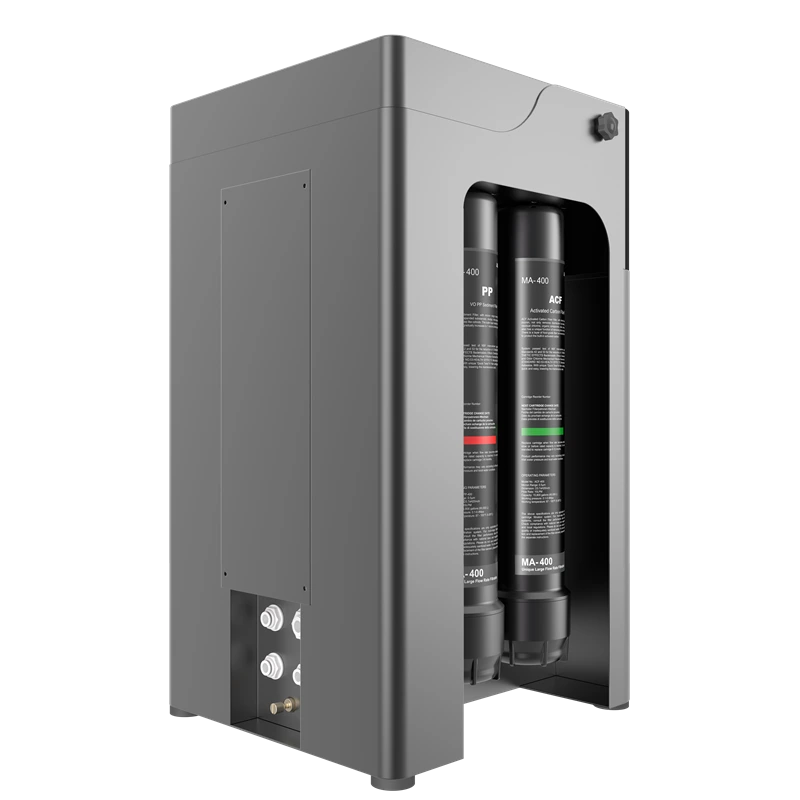Introduction
Reverse osmosis, also known as reverse permeation, is a membrane separation process driven by pressure differences to separate solvents from solutions. It is termed reverse osmosis because it operates in the opposite direction to natural osmosis.
Failures Caused by Deteriorating Feed Water Quality
During initial design, the system operated stably due to high-quality feed water. However, as feed water quality subsequently deteriorated and pre-treatment optimization became unfeasible, the reverse osmosis unit experienced significant operational failures. Specific manifestations included rapid decline in product water yield and accelerated increases in operating pressure and pressure differential.
Failures Caused by Degrading Pretreatment Performance
Deterioration in pretreatment equipment performance resulted in effluent turbidity, SDI values, and COD levels significantly exceeding feedwater quality requirements. Specific manifestations include: CMF or UF membrane fiber breakage; severe bacterial and microbial proliferation in buffer tanks; media dislocation or flow imbalance in multimedia filters; and severe media pulverization or microbial proliferation within activated carbon filters.
Failures caused by substandard cartridges in security filters
When security filter output increases, cartridges may deform or fail to meet filtration precision requirements, allowing contaminants to bypass into the reverse osmosis system. Specific manifestations include: security filter cartridges with undersized diameters; low-quality cartridges failing to achieve required filtration precision; cartridges that cannot be securely compressed and are prone to deformation.
Failures caused by improper scale inhibitor selection and dosing
As the “guardian” of safe and stable reverse osmosis operation, scale inhibitors have become the mainstream method due to their excellent performance and low operating costs. However, numerous issues arise in their selection, dosing, and mixing. Specific manifestations include: mismatched scale inhibitor properties with water quality; unreliable performance of scale inhibitor metering pumps; excessive dilution of scale inhibitors; and severe contamination of scale inhibitor metering tanks.
Failures Caused by Improper Dosage of Other Chemicals
Different water qualities require specific quantities and types of chemicals to enhance raw water treatment. However, incorrect usage or dosage of these chemicals due to various reasons can lead to severe consequences. Specific manifestations include: inappropriate flocculants causing severe membrane fouling; excessive oxidant dosage causing membrane oxidation; excessive reducing agent dosage causing severe membrane blockage.
Instrumentation-Related Failures
Most reverse osmosis systems currently employ imported digital displays. While some instruments provide highly accurate and stable flow readings when properly installed, other types exhibit significant fluctuations during operation. Particularly concerning are instruments with parameter-setting functions, where displayed product water flow rates can be manipulated. Such instruments, acting as the “eyes” of the RO system, can mislead technicians in their operational assessments. Specific manifestations include: 1. Overstated concentrate flow rate (actual lower) causing excessively high recovery rates and scaling; 2. Understated concentrate flow rate (actual higher) causing excessively low recovery rates and pressure differentials; 3. Excessive flow meter reading fluctuations preventing accurate 10–15% ratio assessments.
Failures Caused by Design Defects and Improper Operation and Maintenance
Reverse osmosis systems frequently encounter various issues. Some systems exhibit inherent design flaws, while others develop operational deviations during routine operation and maintenance, leading to significant operational risks. Specific manifestations include:
1. During initial design, the high-pressure pump head selection was too low, resulting in water production failing to meet design requirements when temperature or feedwater quality changes occur;
2. Membrane oxidation increases water flux while degrading product water quality;
3. Inverted or damaged brine seals cause excessively high actual recovery rates, leading to scaling and water quality deterioration;
4. Damaged O-rings degrade product water quality;
5. Mixed operation of new/old or different membrane types degrades system performance;
6. Overlap or partial overlap between the concentrate thrust ring and concentrate outlet in pressure vessels causes excessive recovery, leading to scaling;
7. Excessively long pressure vessels allow concentrate leakage into the product water stream, degrading product water quality; 8. Absence of inter-stage pressure gauges prevents reliable analysis and assessment of reverse osmosis operation;
9. Excessive pressure differentials cause telescope effect damage to membrane elements;
10. Increased product water backpressure leads to reduced product water production;
11. Improper reverse osmosis arrangement causes localized membrane element water flux increase and accelerated fouling;
12. Unreasonable reverse osmosis recovery rate design with insufficient membrane element quantity;
13. Particulate contamination causing severe mechanical fouling of membrane elements, elevated first-stage pressure differential, and deterioration in product water yield and quality;
14. Contaminant deposition and bacterial/microbial contamination resulting from system shutdowns.
 Reverse Osmosis Scaling Right After Startup? Here's What You Need to Know About Prevention and Treatment!
Reverse Osmosis Scaling Right After Startup? Here's What You Need to Know About Prevention and Treatment!
 Reverse Osmosis Scaling Right After Startup? Here's What You Need to Know About Prevention and Treatment!
Reverse Osmosis Scaling Right After Startup? Here's What You Need to Know About Prevention and Treatment!
 Three Certain Trends in Commercial Water Purification Over the Next Five Years
Three Certain Trends in Commercial Water Purification Over the Next Five Years
 Eight Different Methods for Pure Water Treatment Equipment Processes
Eight Different Methods for Pure Water Treatment Equipment Processes